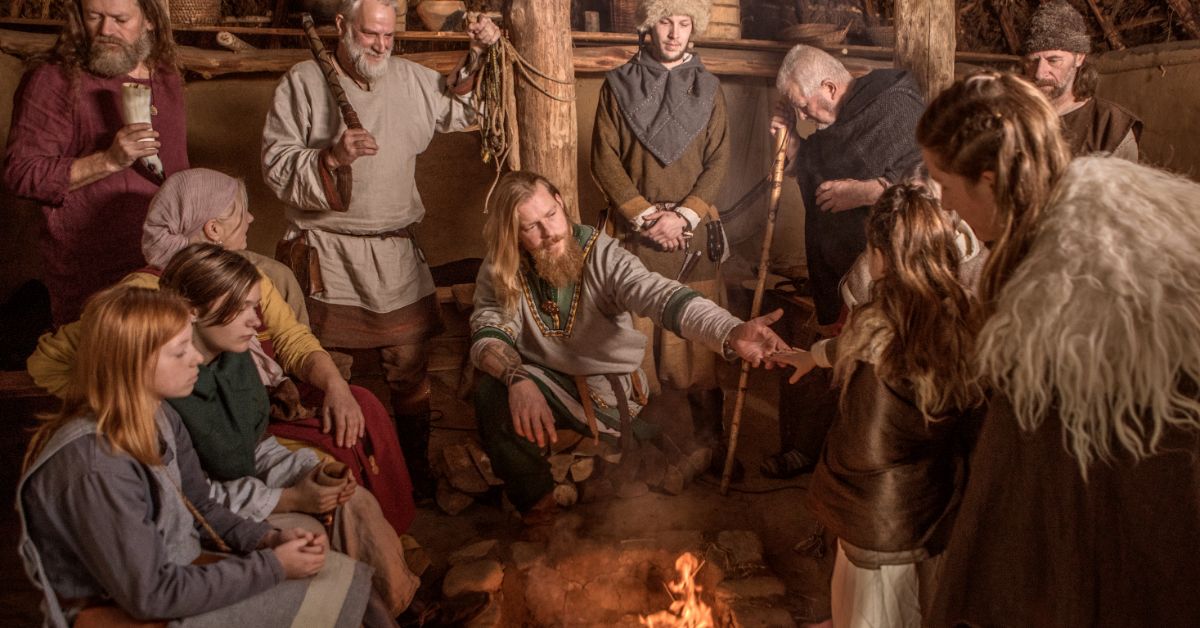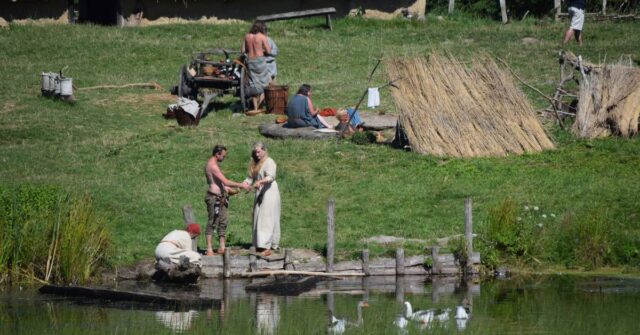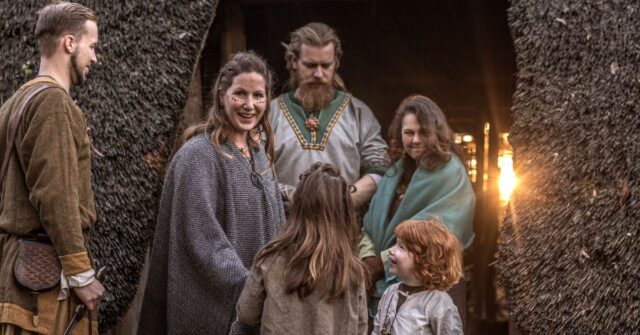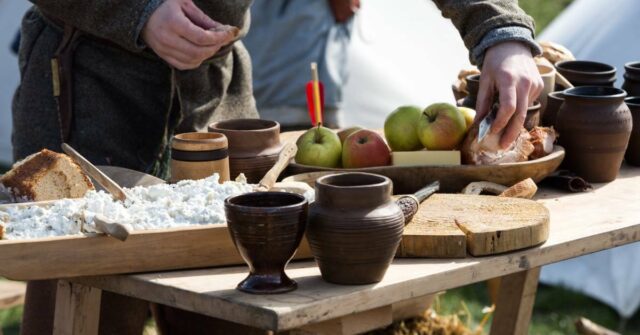The family unit was the cornerstone of Viking society, crucial for survival and prosperity.
This exploration delves into the intricacies of family life, shedding light on the social fabric that sustained Viking communities from the late 8th to the early 11th centuries.
The Roots of Viking Kinship
Viking kinship was defined by bloodlines and heritage, forming the foundation of community ties and individual identity.
These roots influenced everything from property rights to societal roles, echoing the importance of lineage in Viking lore and law.
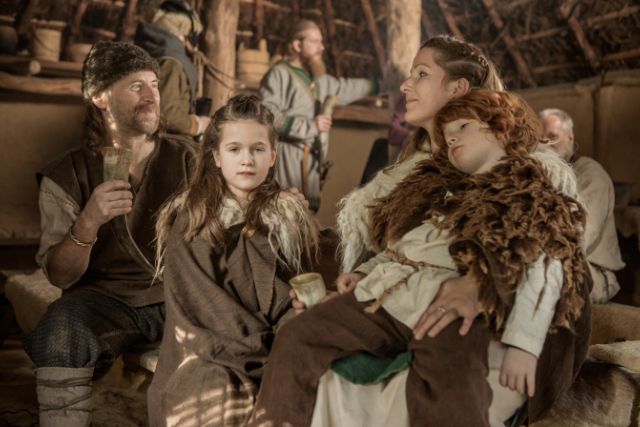

The Importance of Bloodlines and Heritage
Bloodlines were not just a biological connection but a bond that carried legal and social obligations.
The ancestry of Viking individuals shaped their social standing, their claims to land, and their place in the saga of their community.
Clan Loyalties and Their Impact on Society
Clan loyalties transcended individual families, creating alliances that could mobilize for war, trade, or social causes.
These alliances were often sealed by marriages, fostering a network of mutual support and obligation that was vital for survival.
Everyday Life in a Viking Household
The Viking household was a bustling center of activity where each member, from the youngest child to the eldest elder, played a specific role.
From farming to crafting, every task was a thread in the tapestry of daily life.
Roles and Responsibilities of Family Members
Men were typically involved in hunting, trading, and warfare, while women managed the homestead, including textile production and food preparation.
Children contributed as soon as they were able, learning through participation.
Children in Viking Society: Upbringing and Education
Children were valued for their potential to contribute and carry on the family legacy.
They were taught the skills necessary for survival, as well as the tales and traditions that forged their cultural identity.
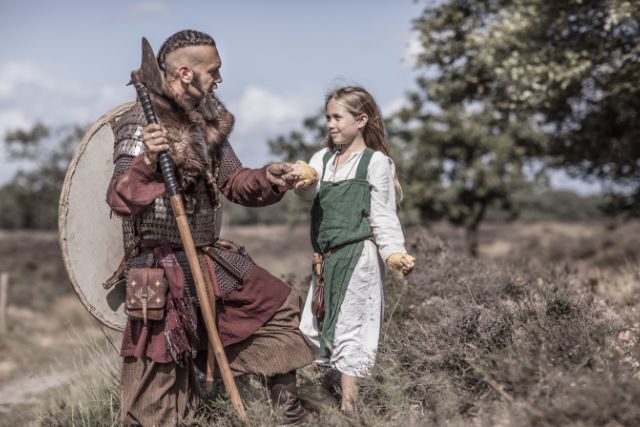

Marriage and Alliances Among the Vikings
Marriage was a strategic alliance in Viking society, often arranged to strengthen familial ties and consolidate wealth. These unions were crucial for the stability and expansion of Viking territories.
Marital Practices and the Exchange of Dowries
Marriages involved significant negotiations, including the exchange of dowries, which could include land, livestock, and other assets.
The dowry served as both a gift and a means of ensuring the financial stability of the new couple.
Political Marriages and Their Social Implications
Political marriages were instrumental in forging alliances between clans.
They were not only a union of two individuals but also a contract between two families, with the power to influence the political landscape.
The Role of Women in Viking Families
Viking women held significant roles within their families and communities.
They were the caretakers of the home and often managed the family’s financial affairs, sometimes even partaking in trade and exploration.
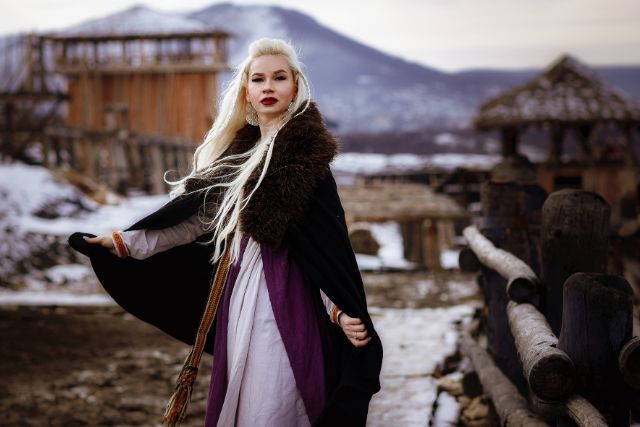

Women’s Work: From Homesteads to Heroism
Women’s work went beyond the homestead, with some earning reputations as skilled warriors and revered figures.
The sagas tell of women who defied the era’s gender norms to become legends in their own right.
The Influence of Viking Women in Trade and Politics
Viking women occasionally played roles in trade and politics, with some notable historical figures influencing trade routes and political decisions.
Their contributions, although often overlooked in historical texts, were vital to the vibrancy of Viking society.
Inheritance and Wealth Distribution
Inheritance customs were complex, with laws that dictated how wealth and property were to be distributed among heirs.
These practices ensured the continuity of the family’s economic foundation through generations.
Understanding Inheritance Laws
Inheritance laws were enshrined in the Grágás, the medieval Icelandic law code, which detailed the division of property among sons, daughters, and widows, often with sons receiving a larger share.
The Division of Property and Titles
Property and titles were usually passed to the eldest son, but in the absence of a male heir, daughters could inherit. This transfer of wealth ensured the family’s legacy and status were maintained.
Social Hierarchy and Family Status
The Viking social hierarchy was nuanced, with a person’s family status influencing their social standing. Nobility, free landowners, and thralls (slaves) formed the basic strata of society.
The Varied Social Strata Within Viking Communities
Social mobility was limited, but not impossible. Heroic deeds in battle, successful trade ventures, or advantageous marriages could elevate a family’s status within the Viking community.
Elevating Family Status: Achievements and Alliances
Achievements in war or exploration and strategic alliances could dramatically improve a family’s standing. Such elevation was a testament to the dynamism and opportunity within Viking society.
Religious Beliefs and Family Life
Norse mythology and pagan beliefs were deeply interwoven with family life, influencing values, practices, and the Viking worldview.
The family participated together in various religious rites and observances.
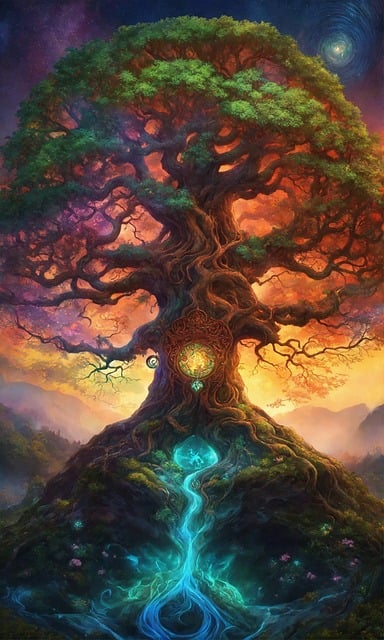

Impact of Norse Mythology on Family Values
The pantheon of Norse gods and the myths surrounding them provided a moral framework and a source of inspiration for the Vikings, influencing their notions of honor, loyalty, and familial duty.
Rituals, Births, Marriages, and Funerals
Key life events were marked by rituals that often involved the entire community.
Births, marriages, and funerals were not only personal family matters but communal events with significant religious undertones.
The Impact of War and Exploration on Families
Warfare and exploration were integral to the Viking era, often leading to long periods of separation within families.
These endeavors were fraught with risk but also brought the potential for great reward and honor.
Separation and Reunion: The Family During Viking Raids
The absence of family members during raids and expeditions was a time of anxiety but also of management and resilience for those who remained.
These separations could last from months to years, with reunions being times of joy and adjustment.
Settlements Abroad: Forming New Viking Communities
The establishment of new settlements abroad allowed for the expansion of Viking culture and the establishment of new family lineages.
These communities maintained ties to their homelands while adapting to new environments.
Legacy and Lineage: The Lasting Impact of Viking Family Structures
The Viking age may have ended, but the family structures and societal norms of the era have left a lasting legacy, influencing the modern understanding of kinship and community in the regions touched by Viking influence.
Tracing Viking Descendants
With advances in genetics and archaeology, it is now possible to trace the lineage of Viking descendants, revealing a living connection to the past that continues to fascinate and inspire.


Viking Family Structures in Historical Narratives
The tales and records of Viking family structures have shaped historical narratives, contributing to the rich tapestry of Nordic history and the global understanding of the Viking legacy.
Conclusion
The family structure in Viking communities was a complex tapestry woven through shared bloodlines, societal roles, and collective beliefs.
It was a system that fostered resilience, adaptability, and a legacy that has endured through the centuries.
Reflecting on the Viking Family Structures in Modern Context
Today, the Viking family structure provides a lens through which to examine contemporary issues of kinship, social identity, and community cohesion, reflecting a time when the family was a person’s greatest ally and asset.
The Enduring Fascination with Viking Kinship and Culture
The fascination with Viking kinship and culture continues to captivate and engage, as it embodies a spirit of adventure, resilience, and a profound sense of belonging that resonates across ages.

